Hokkaido Guide Stories – Around Daisetsuzan Hiking
, by Ayaka
Adventure Hokkaido owner & co-founder Ayaka shares her adventures in Daisetsuzan National Park in the centre of Hokkaido, on our Around Daisetsuzan 6 Day Hiking Tour.
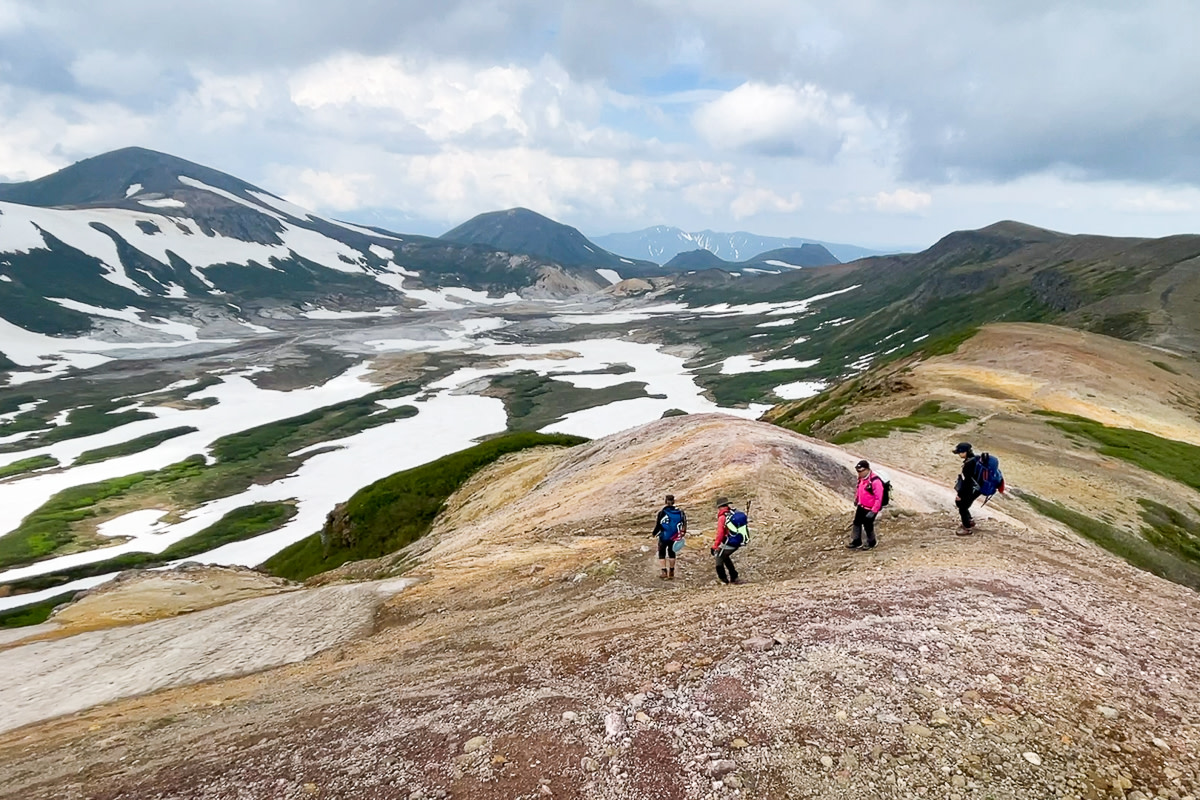
Daistsuzan is a general name for a chain of high mountain peaks including Mt Asahidake, the highest peak of Hokkaido. Naturally it holds a special place in the hearts of Hokkaido people, and of course I am one of them!
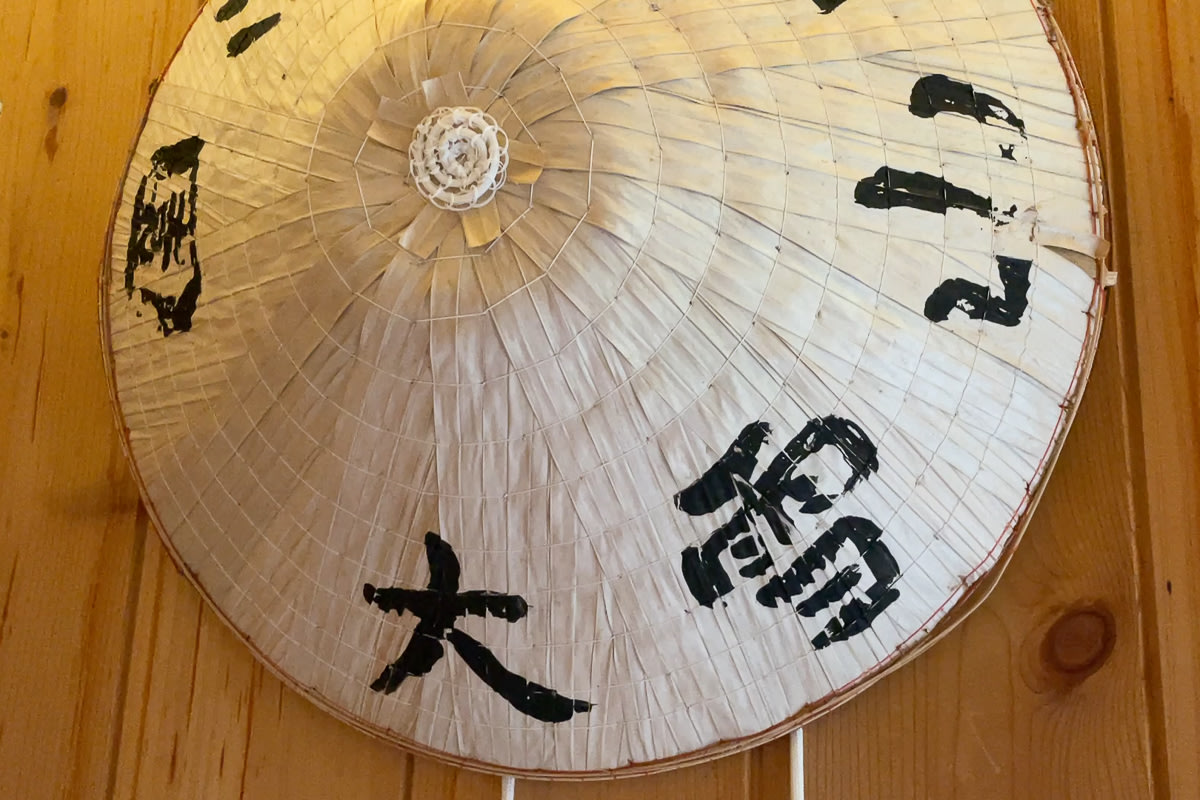
I have a special attachment to the mountains of Daisetsuzan, because that’s where I’ve spent many, many weekends since childhood hiking with my family and friends, even before I could walk properly.
The land area of Daisetsuzan National Park is 2,268 km2, bigger than our capital Tokyo, New York or London! It is home to hundreds of species of alpine flora and fauna. Of the two occasions I sighted wild brown bears higuma in the backcountry in my life, the both times were in this national park.
This time the tour was led by our fellow guides Yasu and Yuka, with two other friends joined from Hokkaido Treasure Island Travel, a partner company we’ve been working together to promote adventure tours in Hokkaido. It was a fun 6 days travelling with all local Hokkaido specialists.

Day 1 – Introduction to the Ainu Lands, People & Culture
Soon after everyone joined in central Asahikawa, Hokkaido’s second largest city after Sapporo, we headed for Mt Arashiyama. The end of June is the start of summer for us, but the temperatures were rising close to 30 degrees celsius in the morning. Walking in the shaded forest felt like a perfect start of the tour.
The bottom part of Mt Arashiyama is a nature reserve called “Hoppo Yasouen”, a botanical garden of northern species. It is a great place to learn about the native trees and flowers, as well as to see the seasonal changes from spring to autumn. The forest was fully dressed in vivid green, which made us visually sense the arrival of the hot summer.
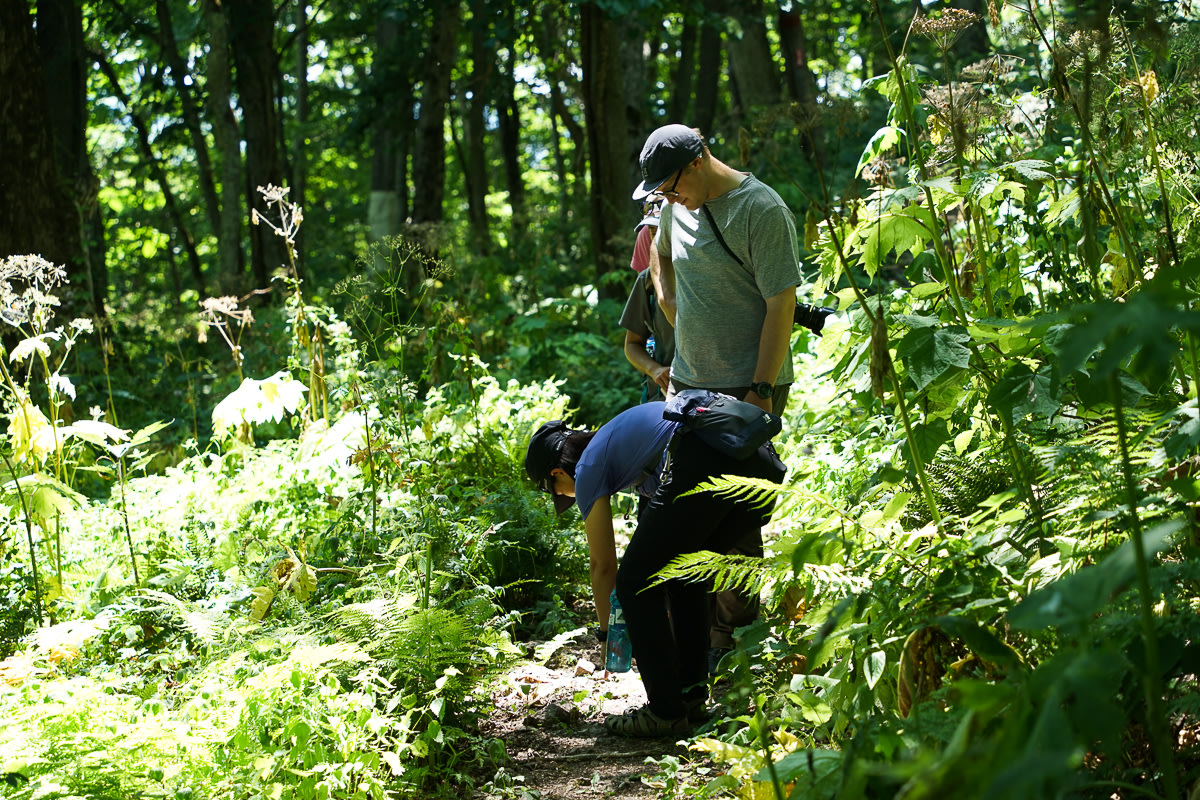
Mt Arashiyama is known as cinomisir in the Ainu world, which translates to “a mountain where we pray”. Every spring the local Ainu get together to hold a ritual on the hill foot, and pray for the year to pass without any misfortunes and for the people to live in happiness and peace.
At the summit of Mt Arashiyama (253m / 830ft), we could look over the city of Asahikawa and the rivers below our eyes. On a fine day like this, we can often see the Daisetsuzan mountains in the distance, but unfortunately this wasn’t the case today, due to the clouds developed around the mountains.
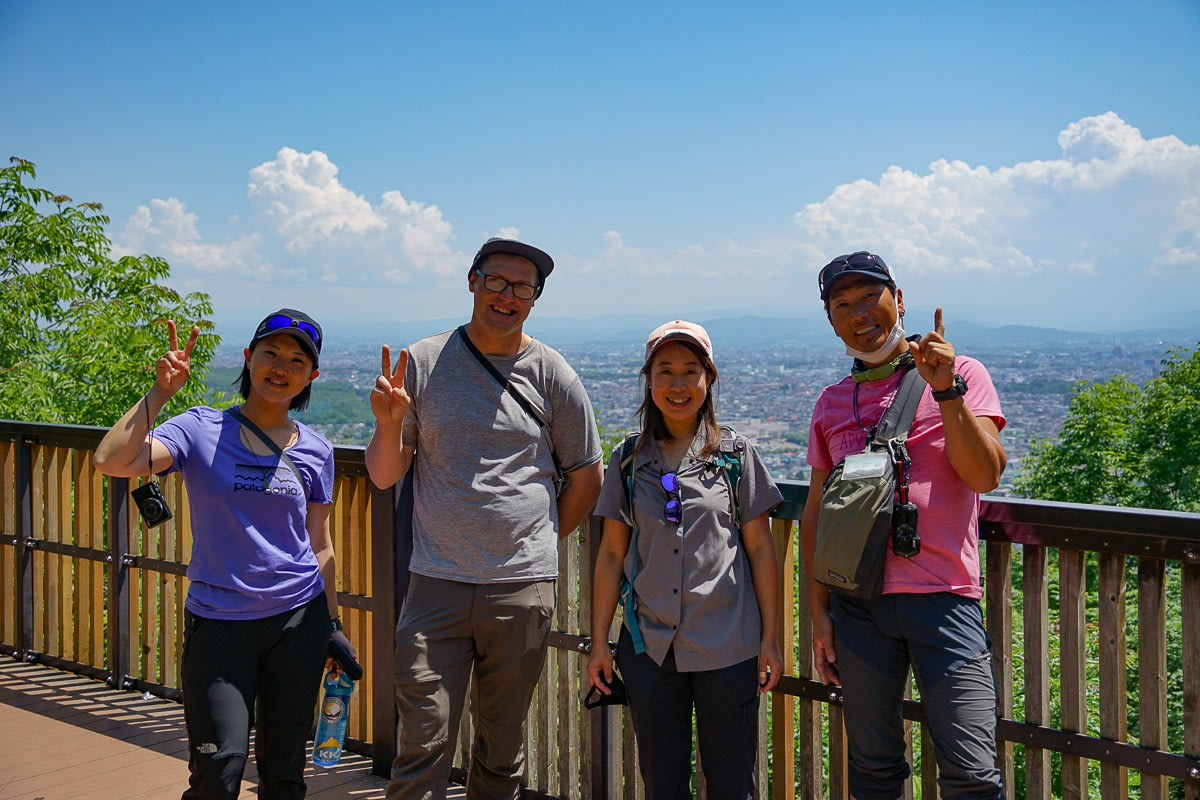
The exciting moment on our hike down was to spot a woodpecker feeding on a tree. We were sensing its presence from the noisy drumming from the beginning of the walk, but it was nice to actually see the figure of a forest resident with our own eyes!
Feeling a bit of hunger after the two-hour walk, we drove to Kawamura Kaneto Ainu Museum, the only private, oldest Ainu museum in the country. We were given a friendly welcome by our hosts Hisae san and her son Haruto san in the cise, a house built with only timbers and bamboo grass, situated on the property.
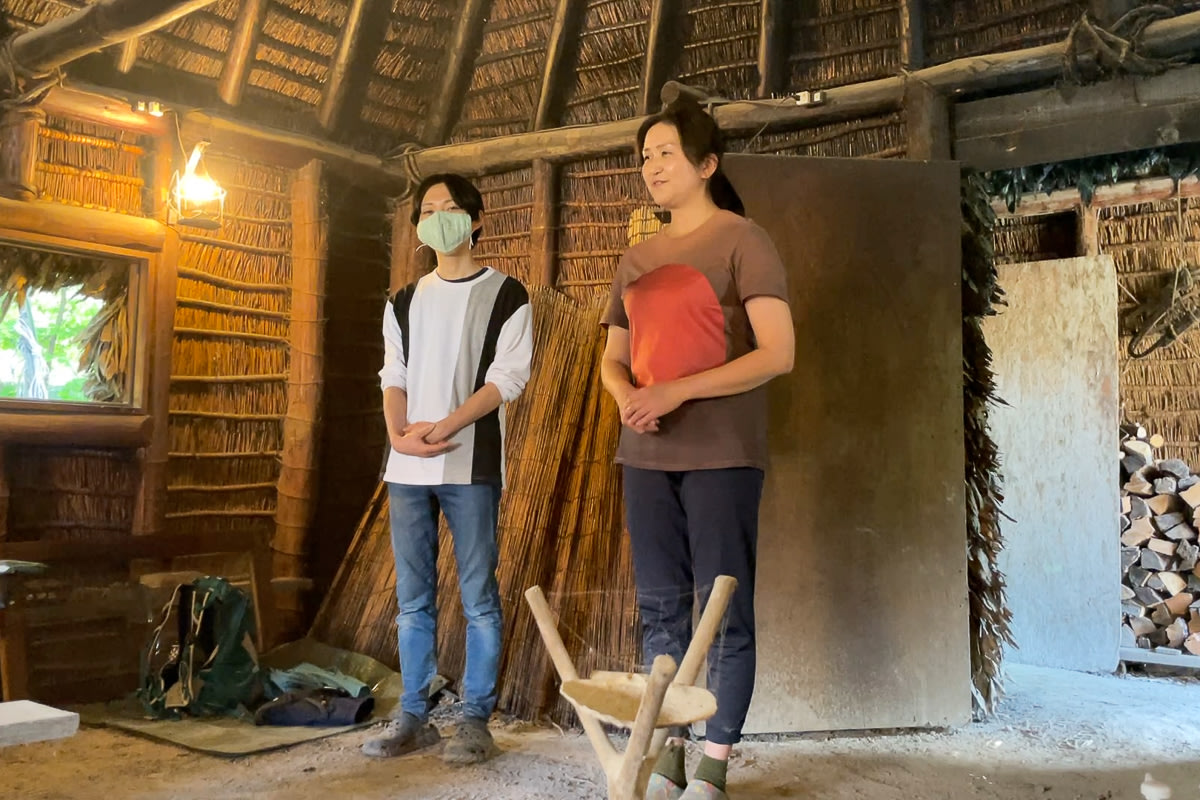
To build a cise requires traditional building skills and techniques, so it really felt special to be able to have a lunch inside, sitting around the fire together with our Ainu hosts.
The lunch was prepared with the ingredients that are often used in Ainu’s cooking, such as “sikerepe“, fruits of Phellodendron trees (related to the citrus family), “kito“, like a wild garlic shoots only found in the sub-alpine zones of northern Japan, and “cep“, salmon, an important food sauce for Ainu’s diet.
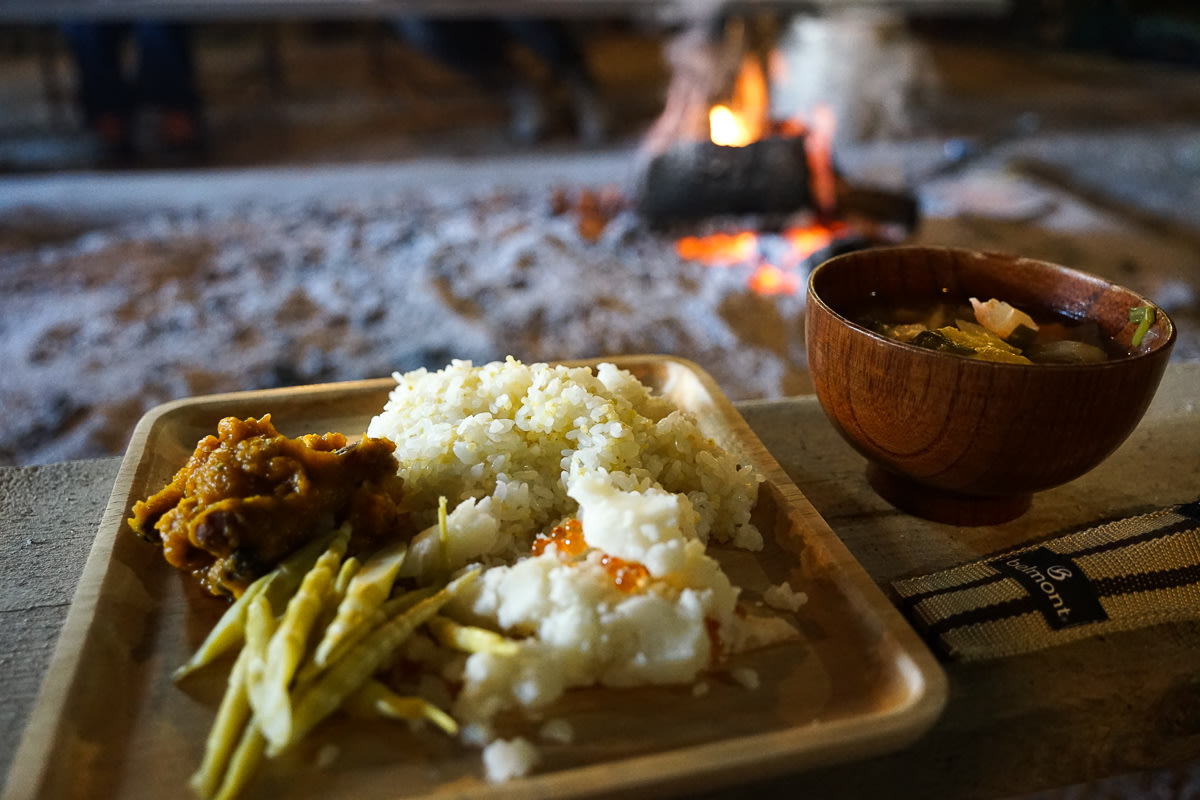
We enjoyed the lunch very much, as most of us went for a second round! But what’s even more memorable was to have a chat with Hisae san and Haruto san about how Ainu people were living before and during the colonisation of Japanese people into Hokkaido.
How they used to catch salmon on the Ishikari River in Asahikawa; how they were navigating in the untouched forests and mountains; and how they were helping Japanese immigrants at that time; Listening to Hisae san telling us how the Ainu were living back in the time, was very interesting and I could see it activated everyone’s imagination.
It is always learningful to tour around the museum guided by Hisae san. Even though I’m a frequent visitor to the museum, I am surprised that every time I visit there, I pick up something new from her.
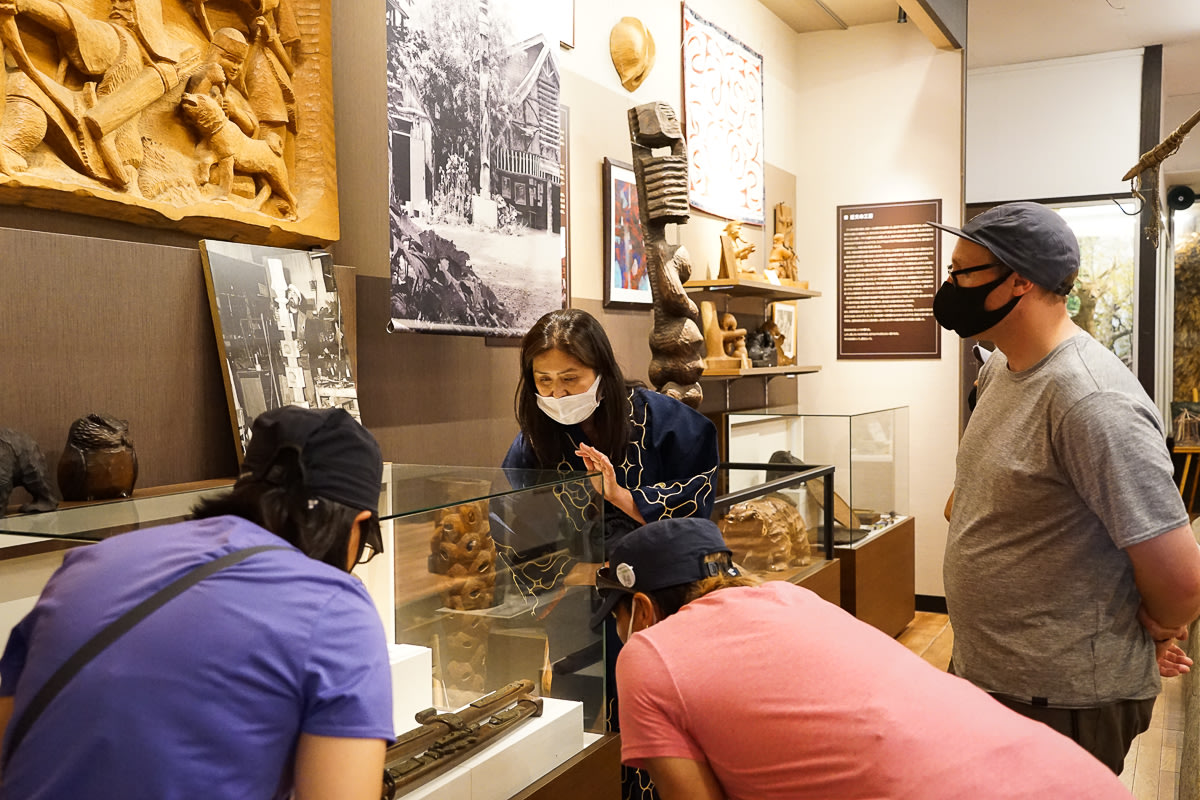
After saying our goodbyes to them, we headed for Asahidake Onsen for a night stay. The elevation here is 1,100m / 3,609ft so the air felt refreshing and much cooler than the downtown. We were ready for a soak in onsen, natural hot springs!
When I designed this tour itinerary initially, I wanted our guests to be impressed by the diversity of mountains and environments within one national park, as well as to fall in love with the onsen culture like I am! The selection of overnight places, therefore, is based upon the onsen experience, and mind that every time I mention “onsen” here, it means thermal springs.
Day 2 – Daisetsuzan Traverse from Mt Asahidake to Mt Kurodake
Today’s hike marks the longest of all the hikes we do on our Around Daisetsuzan 6 Day Hiking Tour. We skip the first climb by riding a cable car from Asahidake Onsen though, it is virtually a magic that we reach 1,600m / 5,249ft above sea level in just 8 minutes!
The sky was clear and the mountains we could not see yesterday were showing their faces. I always feel blessed to see the summit of Mt Asahidake without any clouds covering it. It is such an iconic mountain, and is spectacular to see, especially the vapours discharging from the rugged gullies. We can hear and smell the sign of life of the earth.

During the ascent to Mt Asahidake, we were cheered all the way along by the over-the-shoulder-view. Behind us was the view of green mountains striped with white snow, a kind of scenery only seen at this time of the year.
Yasu took the lead today, like always, sharing his stories related to Daisetsuzan and some tips to enjoy hard climbing. We even had fun having a yamabiko (mountain echo) competition. It went well against the opposite side of the gully, and we could hear our voices echoed back to us.
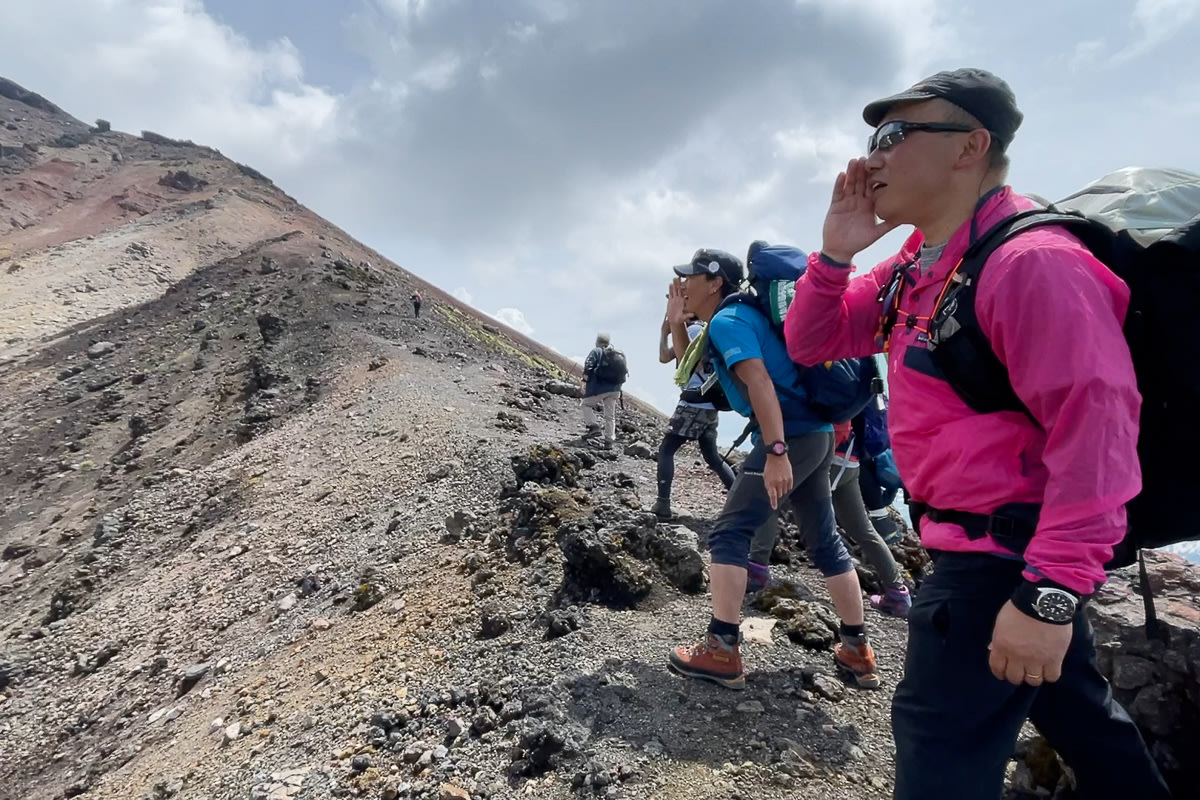
The climbing went nice and smoothly to the top, and there on the other side of Mt Asahidake awaited us the long stretch of snow on a down slope. We knew this so each of us was armed with a light-weight, plastic sled, to slide the hill down quickly.
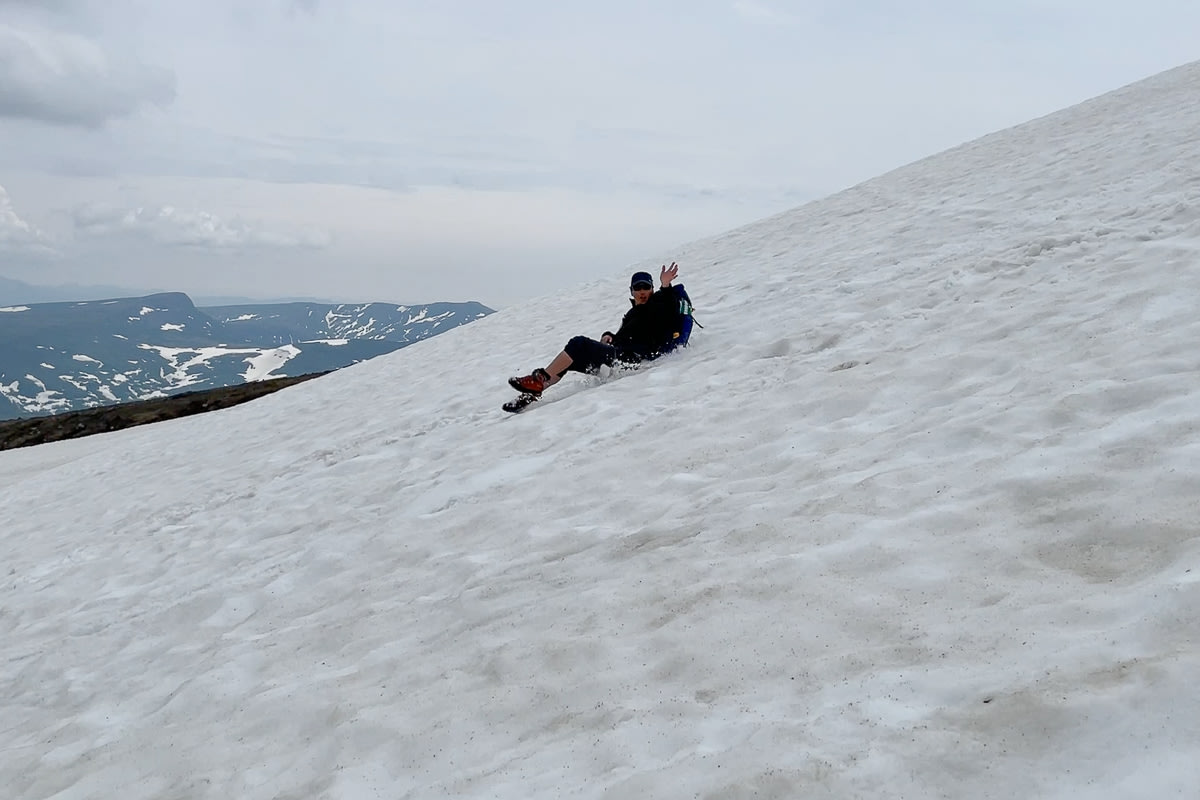
The short climb to Ohachidaira Caldera was a wow moment for me. I had walked the section several times before, but I had never seen as many iwaume flowers (Diapensia lapponica) in bloom at the site. It was impressive to see the whiite carpet of iwaume spreading over the rocky ground as far as the eye can see!

Likewise, the rest of the walk to Mt Kurodake was exciting, as we were hearing the sound of thunder and the dark clouds developing high on the other side of Mt Asahidake. We had more of the on-ice walking and river crossing on a snow bridge – what an eventful afternoon walk it was!
Hotel Taisetsu in Sounkyo, our home for this night, has 3 indoor onsen and 2 outdoor onsen. For an onsen lover, it is wonderful to be able to go to different spas before dinner, before going to bed, and again in the morning!
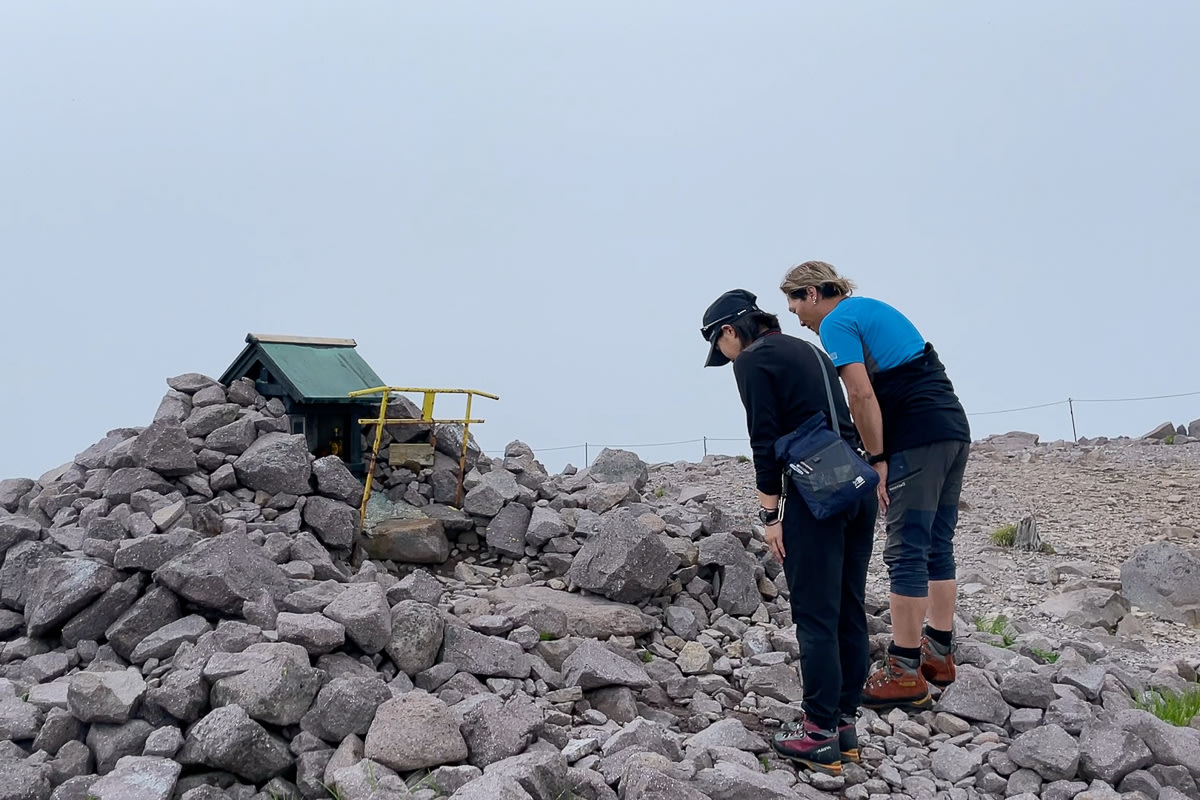
Day 3 – Daisetsu Kogen, Home to the Alpine Ponds and Brown Bears
We started off the day with a drive to Daisetsu Kogen. Here you find a small onsen inn deep in the Daisetsuzan mountains, quite far from human civilisation. Out of cell phone coverage too, it is a perfect site to digital detox if you wish.
Here is also the trailhead for the popular Mt Midori or Midoridake, as well as for the Kogen Numa trail. The latter trail, which we’re walking today, is known as brown bear territories. Brown bears are often sighted in the upper section of the trail below the cliffs of Takanegahara, and this is why some of the sections are only open a short window of two weeks in late June – a unique environment that cannot be found anywhere else!
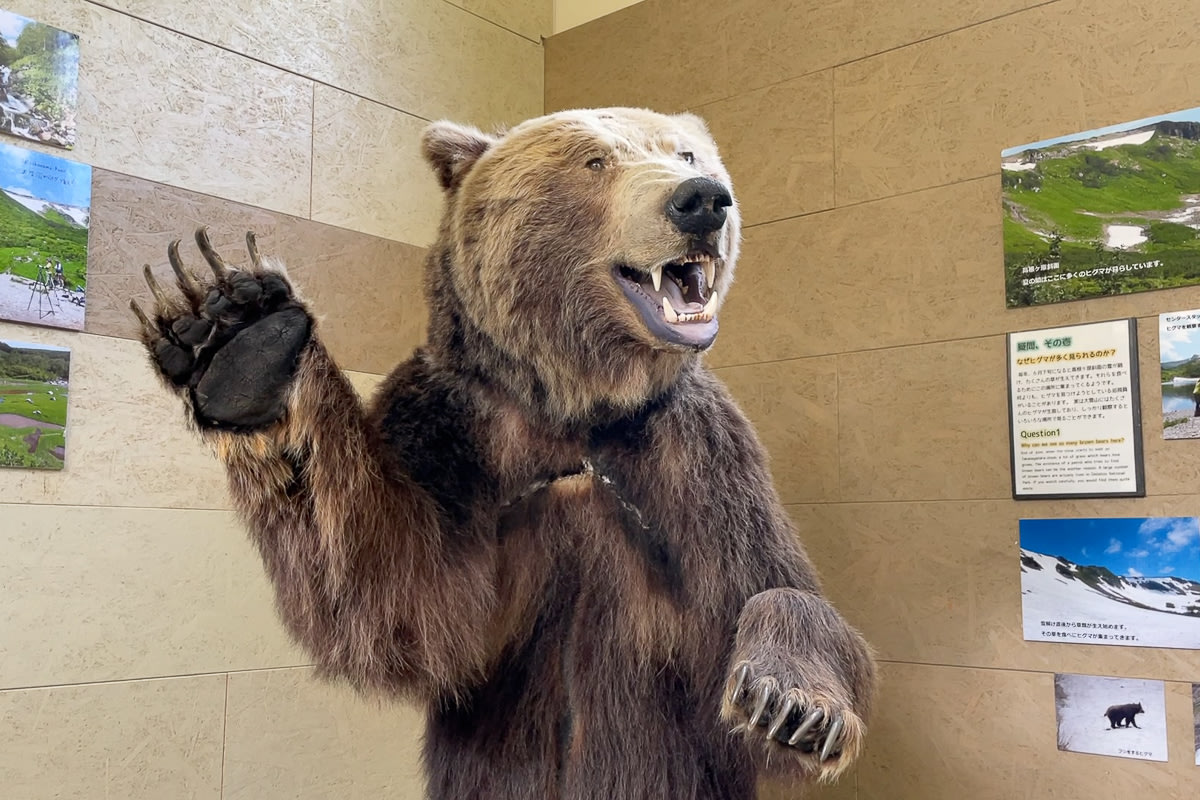
At the Higuma Information Centre we obtained the whereabouts of the recent activities and sightings of brown bears – not aiming to encounter one, but to avoid any contact with the lord of this land. Brown bears which have learned the taste of human foods can be life-threatening dangers to us, and unfortunately, we have an increasing number of deadly accidents every year all over Hokkaido.
If you are ever going there by yourself, please strictly follow the instructions given at the Higuma Information Centre, especially around the resting sites where you are allowed to eat. Leave no trash is the golden rule!
Because this winter was blessed with a lot of snowfall (too much for some), most of the alpine lakes along the trail were still under the snow. This meant more on-ice walking!
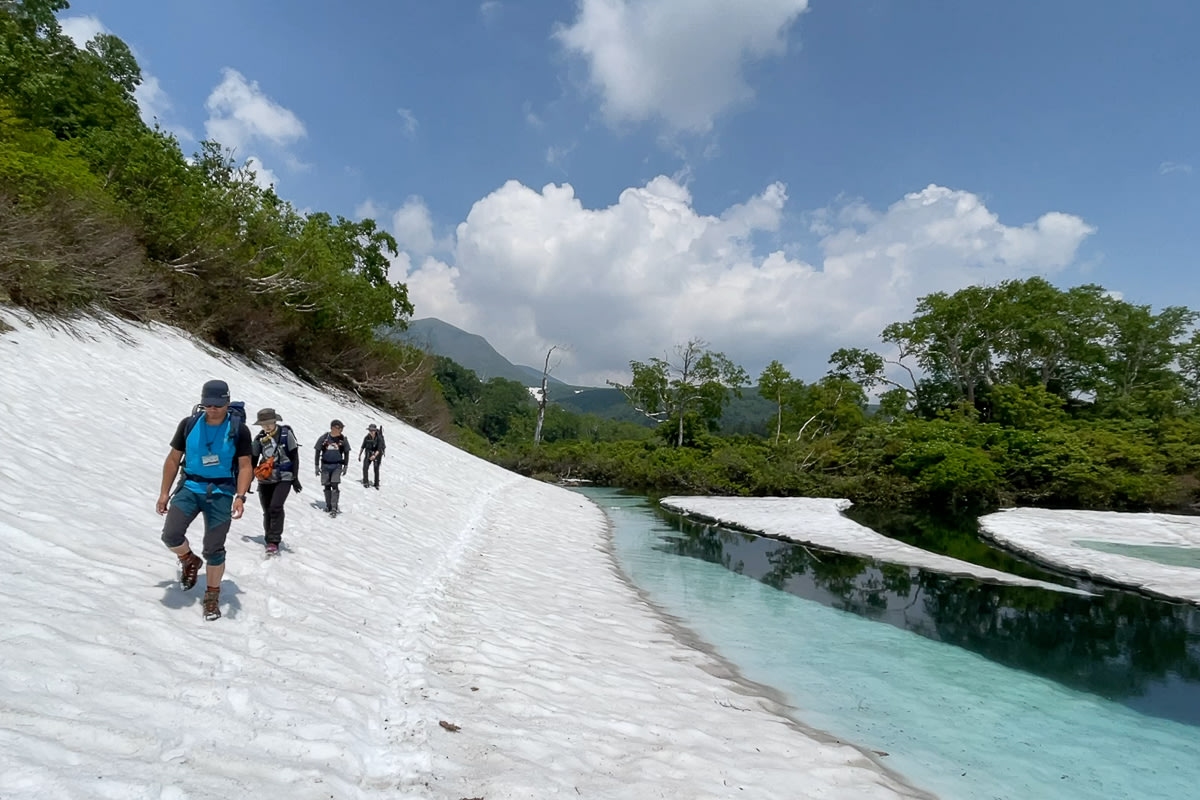
It may look scary to some, but in the early summer when the temperatures rise warm enough to walk in short-sleeves, the surface of snow becomes just like the sand beach. By sticking the tips and heels of your boots you can walk comfortably even on slopes. I don’t recommend using the sledge on this walk, unless you want to water slide into the snow-melt pool!
The walk is never tedious and finishes before you know it – walking across a gushing river on a single log, walking side by side a clear stream, finding steaming vents and salamander eggs in the shallow lakebed. I always love to see the colour contrast of white snow and blue lake here, and I felt more energised after walking 5 hours in the mountains.
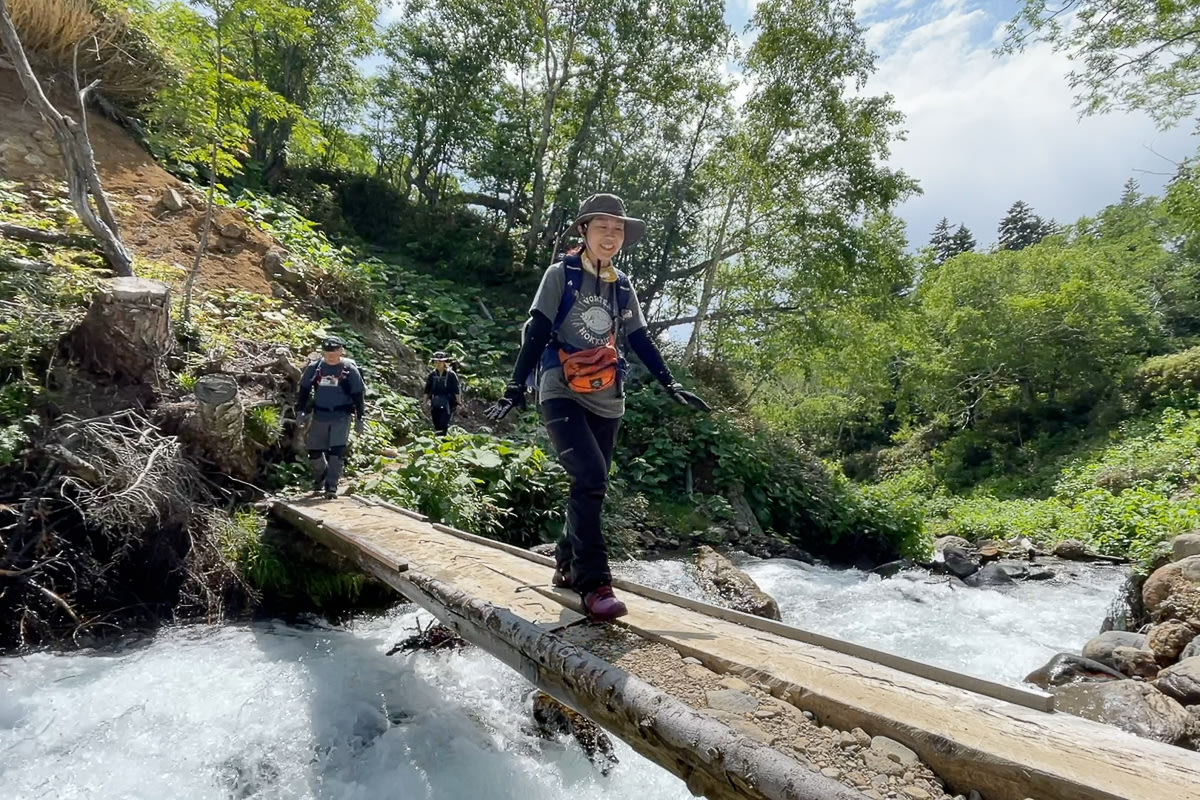
The thunderstorm caught us, yet in the van, soon after we departed for Nukabira Onsen. We drove over to the Mikuni Pass and stopped for a coffee / ice cream at a cozy cafe at the top of the pass, and then continued onto Nakamuraya, one of my favourite inns!
The collection of antiques and the DIYed set-up is creating a nostalgic atmosphere here, which makes you feel at home. The foods are scrumptious too, not surprising when everything is prepared on site using the locally-produced.
Every time I pick up a new copy of the recipes (available free of charge from the souvenir stands) and I try it out at home. A kind of souvenir I’d like to treat myself from time to time!
Day 4 – Mt Hakuunzan Hiking, Lake views & Northern pika
The day started with a scenic transfer in the van over to Lake Shikaribetsu. The lake is the highest lake in Hokkaido at 810m / 2657ft. The lakeside road is narrow and winding, beautifully surrounded by the broadleaf forest.
The trailhead to Mt Hakuunzan, meaning a white cloud mountain, is situated on this lake shore as well. I’m fond of this loop walk because of the lake view from the top of the mountain and also close from the trail. The blue lake water looks amazing from every direction you see.
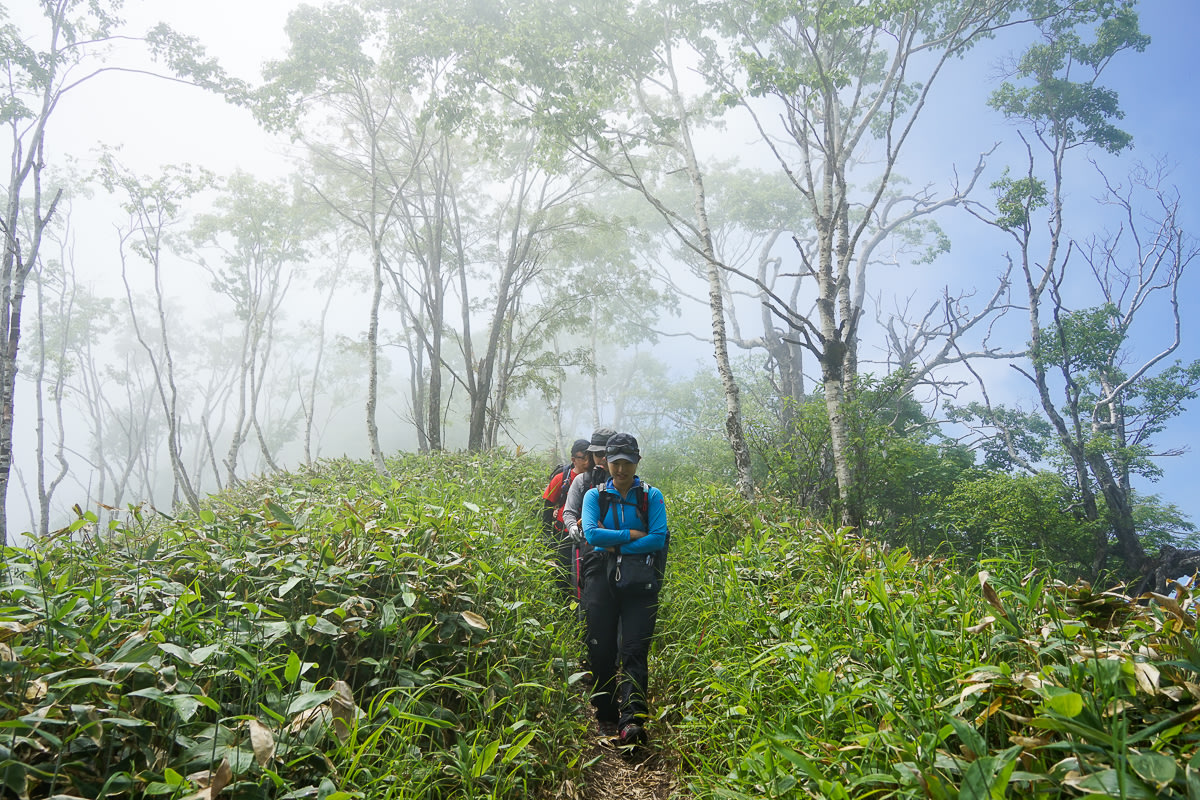
Today we were led by Yuka, the youngest guide in our team. She thoughtfully set the walking pace for everyone, and stimulated our wants for sighting Northern pika at the summit of Mt Hakuunzan by sharing her knowledge about pika along the way. I didn’t know the famous Pikachu (Pokemon) was derived from this animal until she told us!
The top of Mt Hakuunzan is covered by huge volcanic rocks, with holes between, which makes it a favorite site for Northern pikas to nest. I’ve seen a pika several times on this very spot in the past, and Yasu raised our hope by telling us that the sky condition was favourable for pika to come out their nests and sunbathe.
Yasu recommended that we sit there still for 15 mins without any stamping on rocks, as Northern pika is susceptible to vibration but not to sounds. And exactly after 15 mins of stilness, there it was, we heard the voice of one pika there and the voice of another on the other side. All of us were able to observe a pika on a rock perfectly, as it settled in the sunlight for a good few minutes.
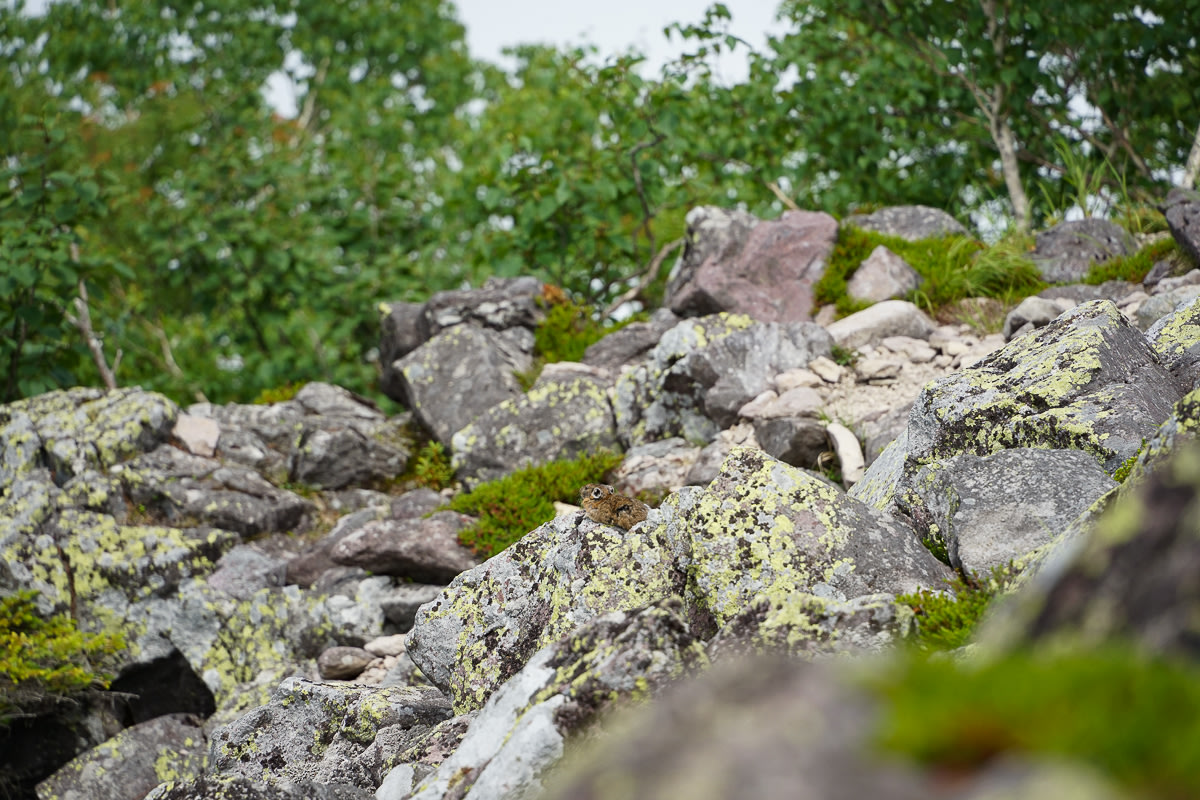
With all the excitement in our heart, we started hiking down to the trail by the shore of Lake Shikaribetsu. The mountain side facing the lake has a different set of atmosphere, as the moisture from the lake helps moss and ferns to grow on the terrain. It reminded me of a forest walk in New Zealand, where I lived nine years and consider it my second home country.
After completing the loop hike, we dropped in a cafe with the lakeview for lunch and a quick foot spa on the lake shore. There’s nothing better than onsening the tired feet and carves with the lake view after a hike! Ashiyu or foot spa is a nice way to chill out with fellow travellers, especially after the group completed all the planned hikes.
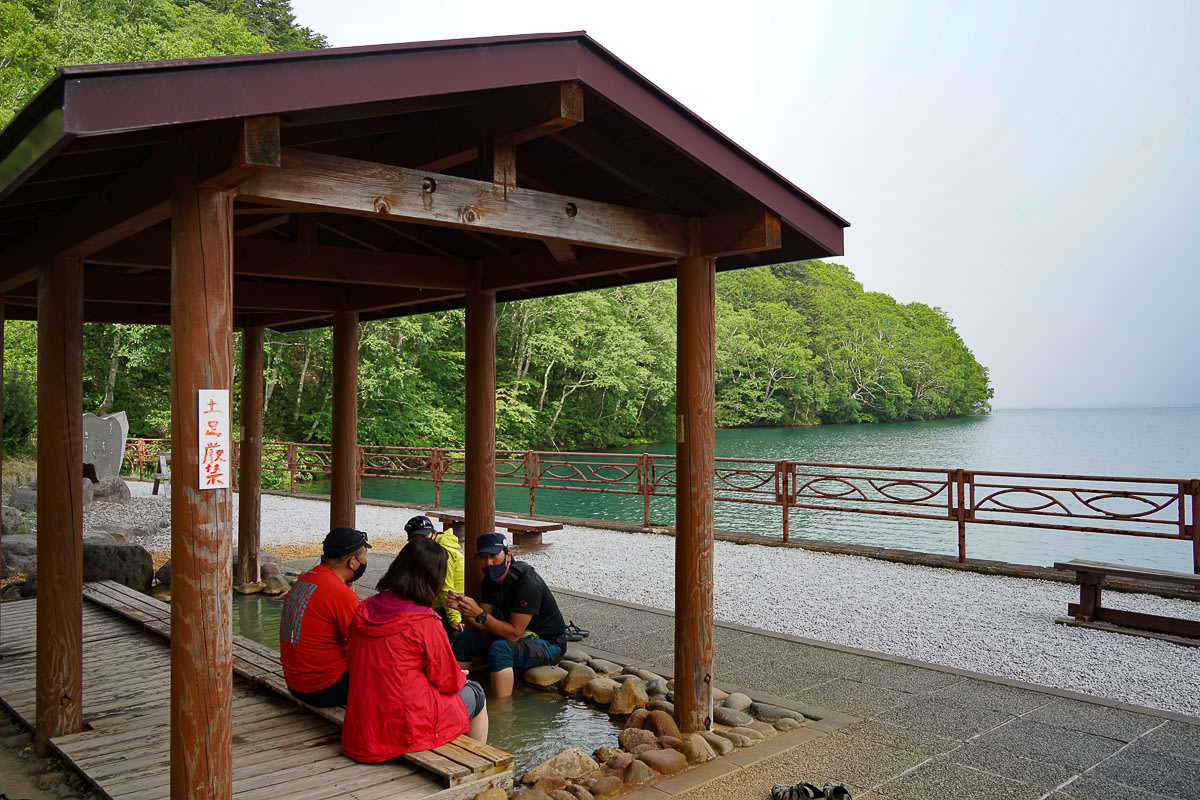
We then headed for Shikaribetsukyo Gorge, tucked away deep in the mountains of eastern Daisetsuzan. No cell phone coverage but heaps of sika deer and good quality onsen – you will find several thermal springs of different mineral components and characteristics all in one location. A paradise for onsen lovers!
A 10 mins by foot down the road from our inn at Kanno Onsen, there is an outdoor onsen on the river bed. For those who like natural settings more, this is the one we take our guests to with our bathing suits on. We enjoyed the sedate walk to the outdoor onsen, cooling down in the late afternoon before dinner. Hiking and onsen is the greatest combo making the tasty food even tastier.
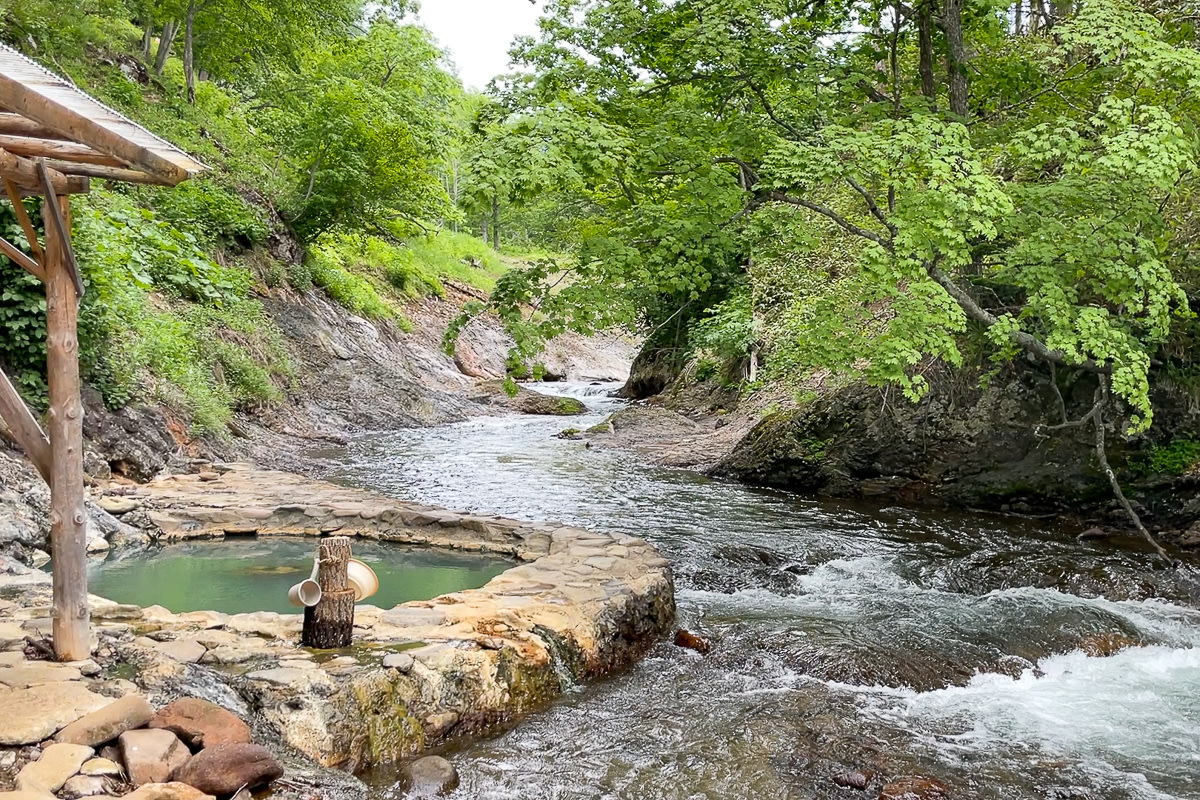
Day 5 – Immersion in the Art of Soba Making & Ducky Kayaking
We had a relaxing morning at Kanno Onsen and departed for Shintoku, a mecca for soba buckwheat. This is the town which people visit in search of good soba noodles, or even better, trying their hand at making it!
At Shintoku Soba House, you can learn how to make soba noodles from very skillful teachers. We had Hojo san, a true artisan with years of experience, who guided us through each step of soba making.
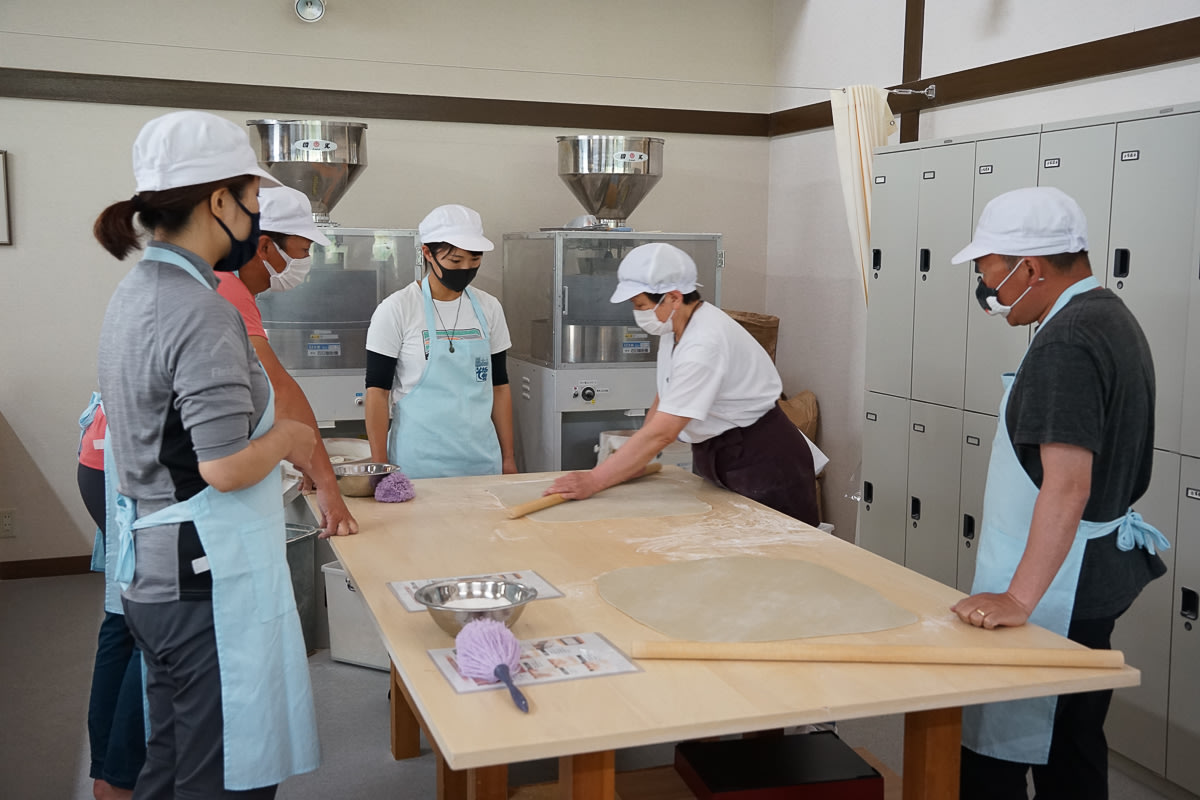
In the art of soba making, small details like the humidity in the air and the temperature of your hands affect hugely how your noodles taste and feel in the mouth. The noodles made by beginners often come out too hard or chewy, and that was the case for most of us, but it was all fun anyway!
What impressed us most was the skills of Hojo san every time she showed us how we are supposed to move and we could never copy her perfectly. It felt like it would take decades of daily practicing to reach her level of artisanship.
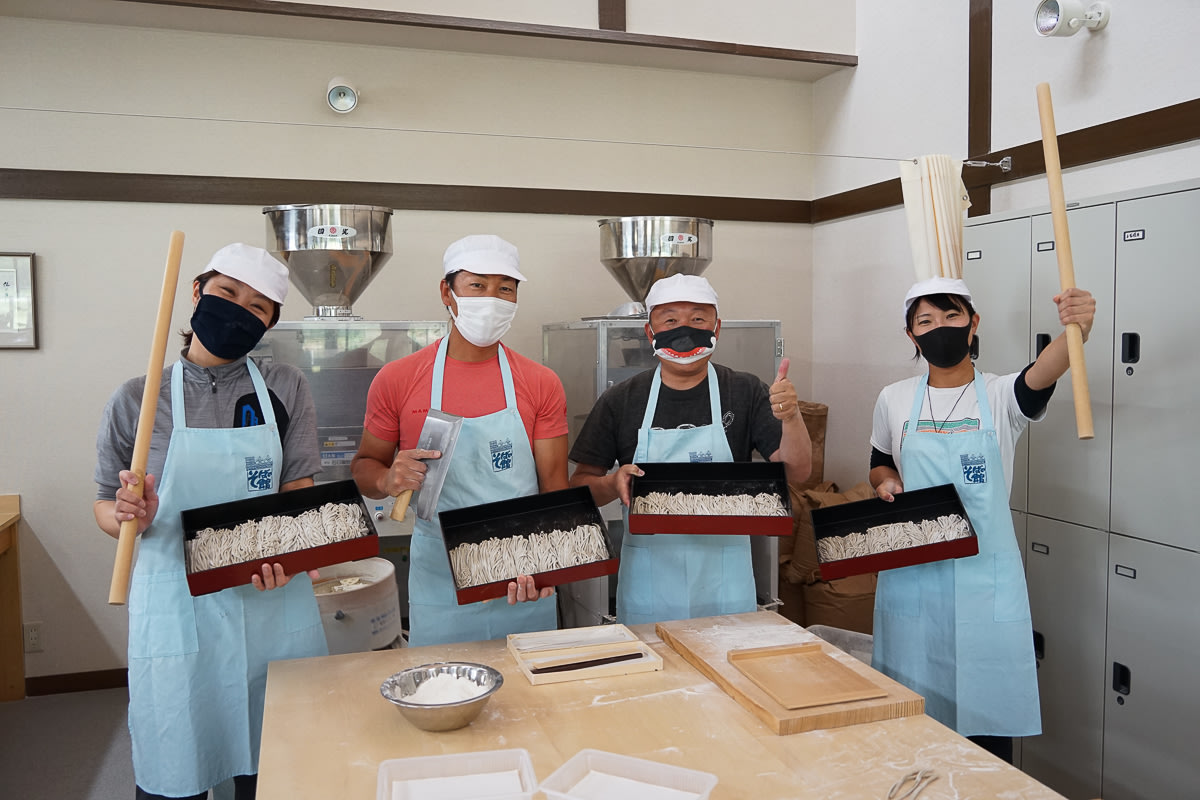
After exercising hard on our jaws (from eating our own noodles), we drove to Ochiai in Minami Furano to meet up with our kayaking guide, Kosuke san. The Sisorapci River we kayaked runs through a scenic gorge sided by forests and has beautiful pristine water sourced from Daisetsuzan mountains. It is cold to swim in even in the summer, so we geared up in drysuits, ready for any kind of splash and dive-in!
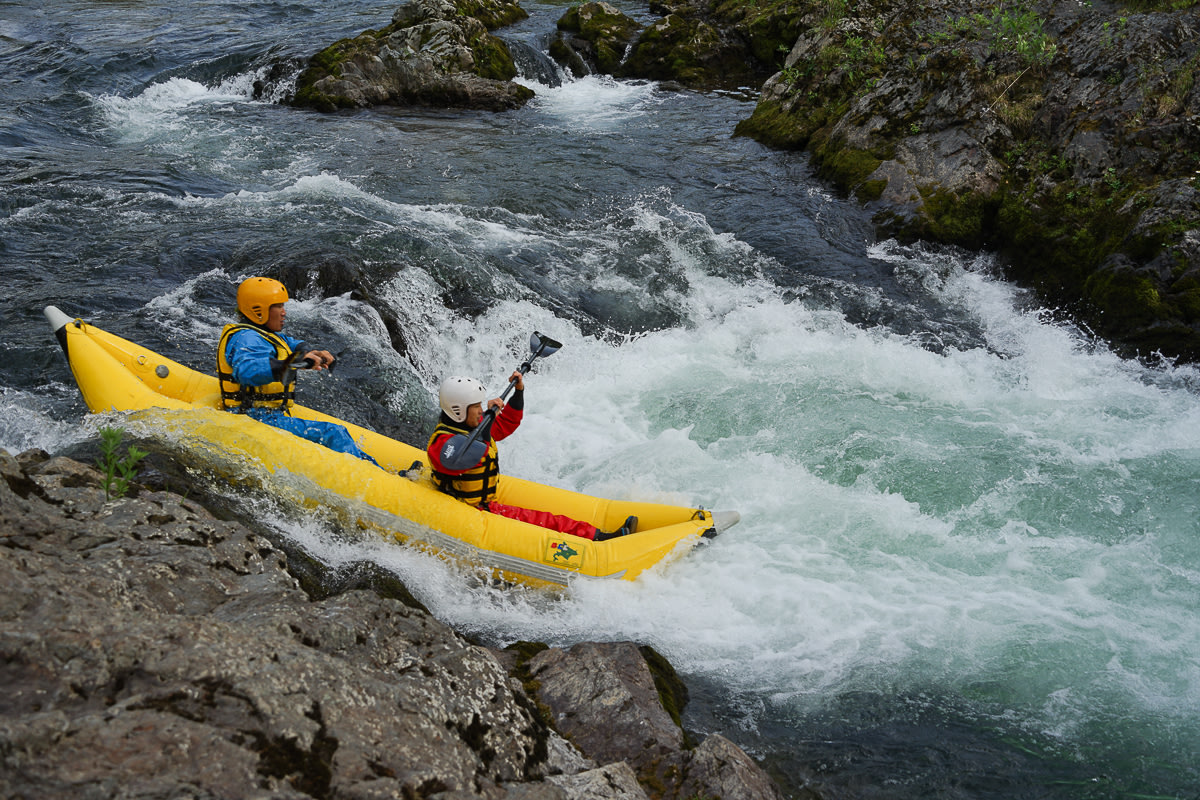
We started off with a dive into a deep pool from a rock with about 4m height. It was the best way to climatise our faces and heads where they weren’t covered in drysuits. The kayaks we were given were two-persons ducky kayaks; we paired up in a team of two and kayaked down without an expert on our boats. Kosuke san gave us thorough instructions and plenty of drills on the quiet sections before tackling the white water.
How time flies when you’re having fun! The two hour on water went very fast, finishing off with a section which was once used for the canoe slalom national championships. Everyone got off the kayaks sound and well, with a feeling of great achievement. We wrapped up our river adventure with another jump-off from a rock in the team.
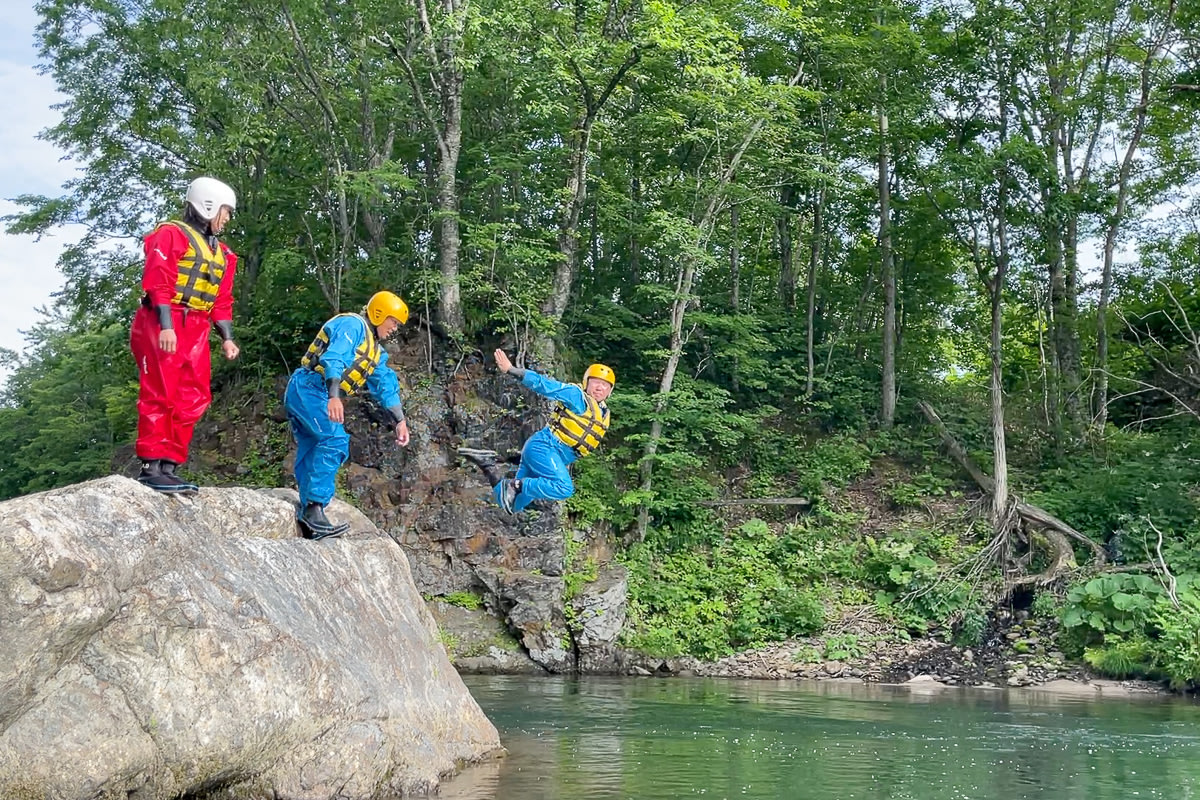
We celebrated the completion of the tour at an Italian restaurant in Furano, which is run by an old school friend of Yasu, a Furano local. The dinner was very satisfying to our stomachs and our eyes. Over the beautifully presented meals, we looked back the last 5 days of adventure full of laughters and discoveries.
Day 6 – Our Daisetsuzan Hiking Adventure ends, Last Day Farewells
After checking out our hotel in Furano, we took the final drive to JR Asahikawa Station where we bid a farewell to everyone under the blue sky. We were very fortunate with the weather all the way through. I didn’t have to pull my rain jacket out of my backpack at all, kind of feeling lucky considering the rest of Japan is having a rainy season.
Our Around Daisetsuzan 6 Day Hiking Tour explores only one national park, but I always feel proud being able to show our guests how rich in diversity Daisetsuzan is. From the alpine walking to the cultural experience, we can share the gems of Hokkaido without spending too much time in a vehicle; an active holiday for nature & culture explorers.
I look forward to sharing some Daisetsuzan adventures with you sometime soon!
See more from our Daisetsuzan Hiking Adventure
Ready to explore Daisetsuzan National Park?
Around Daisetsuzan 6 Day Hiking Tour